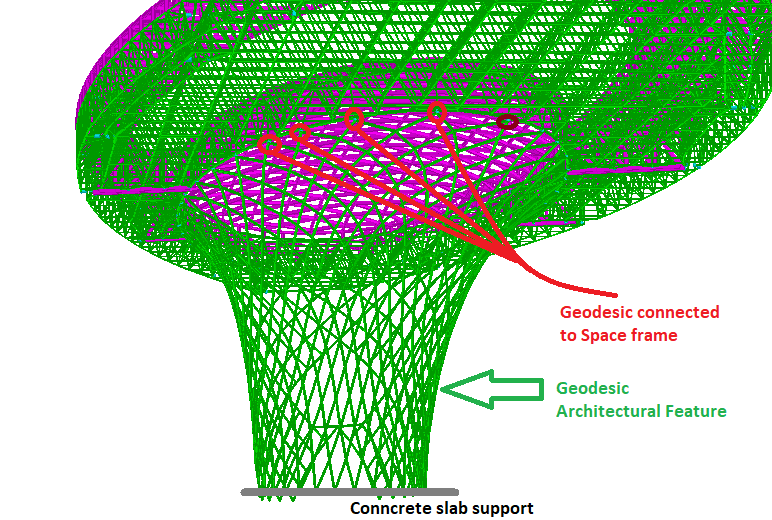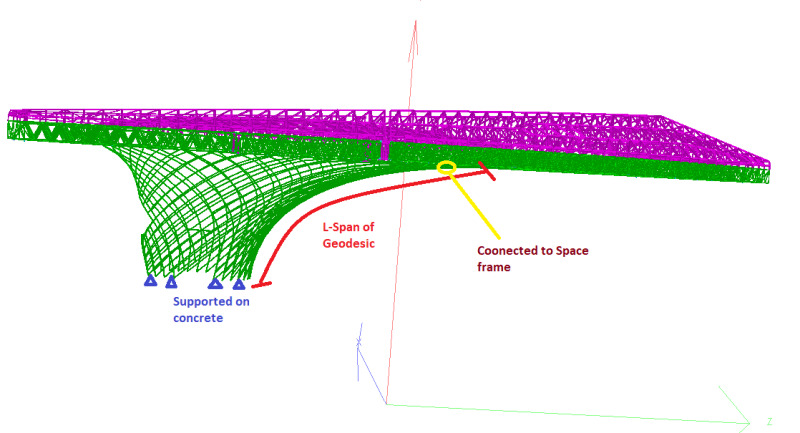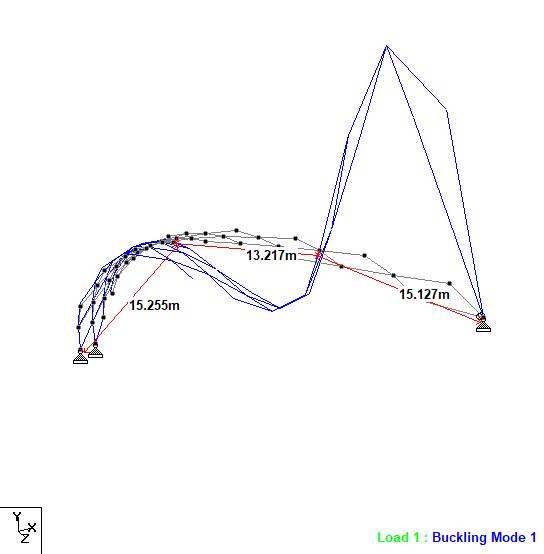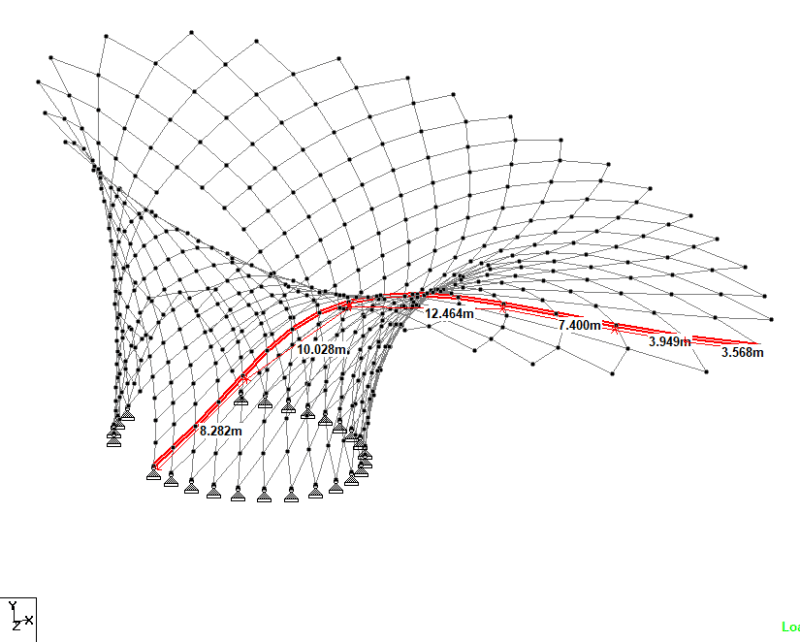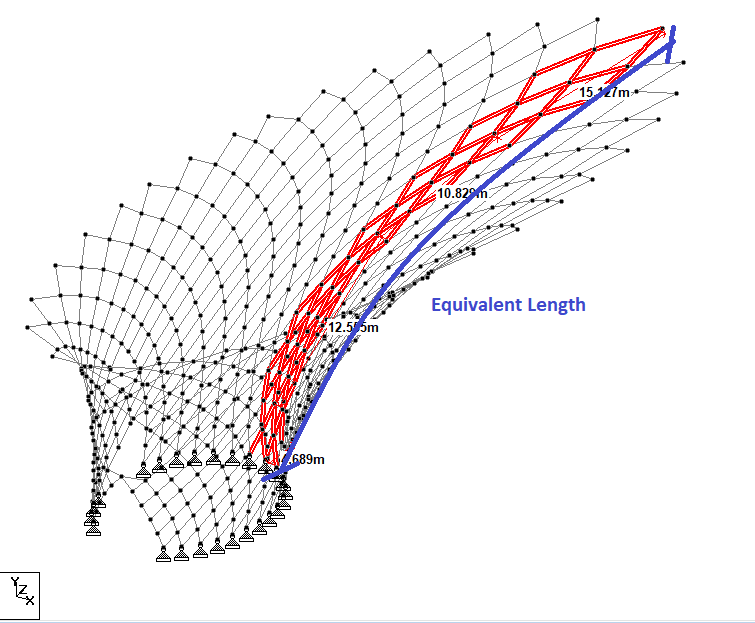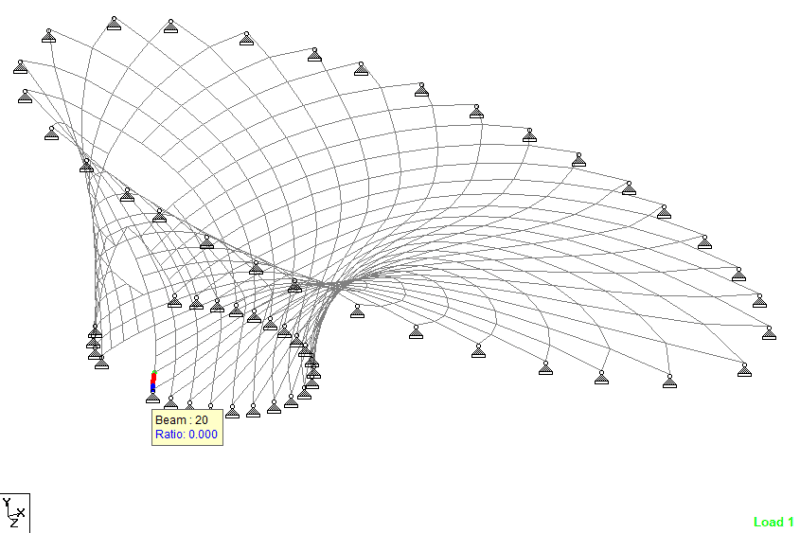Arbu
Structural
- Mar 25, 2018
- 69
Dear All,
I am designing a space frame which is supported on steel columns. there is a central architectural feature as well. when I am modelling all structure in one model and running seismic analysis, then central architectural feature is taking to much load and members are failing (due to moment and compression) . The central architectural feature is made up of 114x6 mm pipes welded. Please suggest some method of modelling in STAAD such that only columns will carry lateral loads.
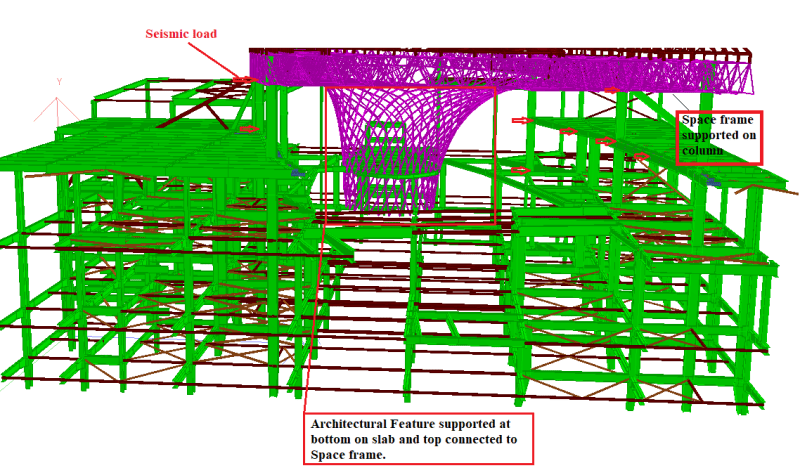
I am designing a space frame which is supported on steel columns. there is a central architectural feature as well. when I am modelling all structure in one model and running seismic analysis, then central architectural feature is taking to much load and members are failing (due to moment and compression) . The central architectural feature is made up of 114x6 mm pipes welded. Please suggest some method of modelling in STAAD such that only columns will carry lateral loads.


